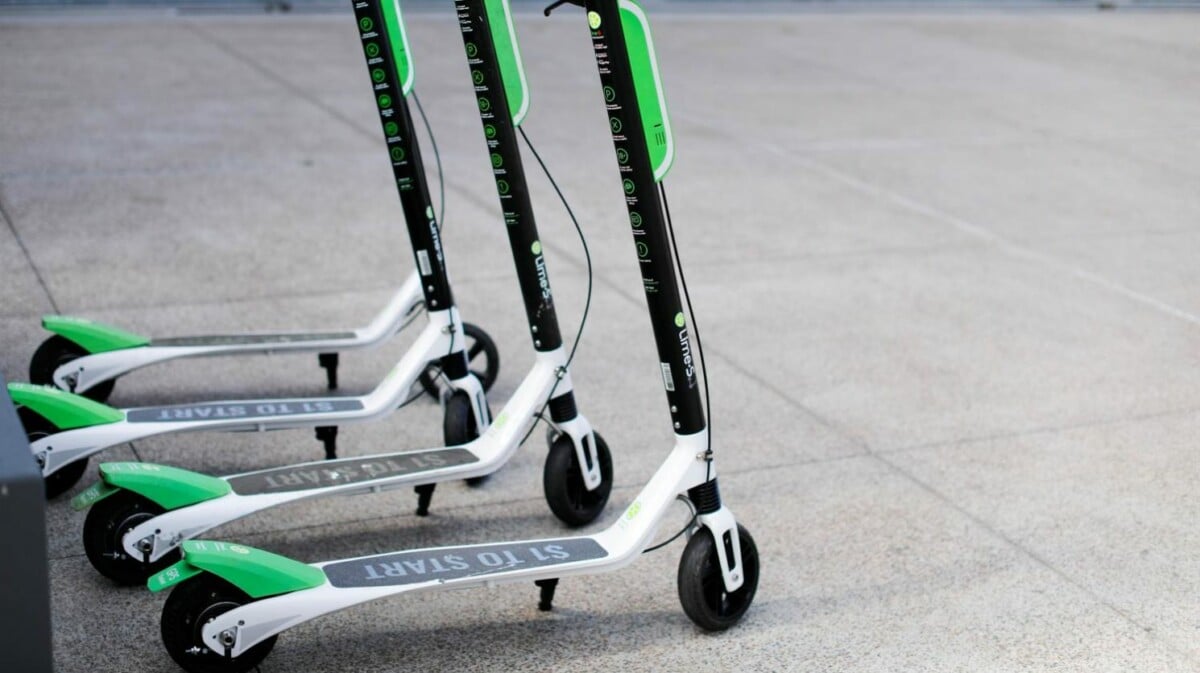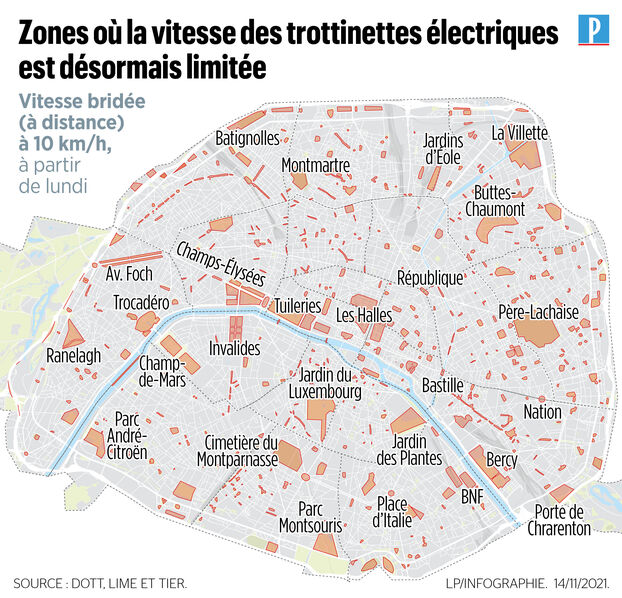Since 2018, self-service scooters have been trying to find a place in Paris. This now mature mobility service is also contested, to the point of being the subject of a citizen vote to maintain, or not, the activity of the operators.
It rolls or it pushes back. This Sunday, April 2, 2023, a referendum will say stop, or not, to self-service scooters. Whatever the outcome, in 2023 we are almost five years into the short but intense history of this mobility solution in Paris. Unframed at first, then gradually regulated, the progression of these small shared electric vehicles has experienced many rebounds.
A look back at the different chapters of self-service scooters in the capital.
At first, anarchy up to 12 scooter operators in Paris
We come a long way, and yet, it’s not that old. The very first self-service scooters landed in Paris in June 2018, at the initiative of Lime. The American company is over the top on the first bike tests in “free floating” compared to Ofo, Obike, Gobee. However, the white, black and green machines did not remain long alone in the capital.
In January 2019, there were already six operators via Bird, Bolt, Tier, Voi and Wind. And how flashy were those scooters, each playing a different color to get noticed. And it worked. The young Parisian public immediately embraced this mobility, which is faster than walking, less claustrophobic than the metro, and taking advantage of the setbacks of the Vélib’.

In the spring of 2019, barely a year after Lime, Paris registered 12 operators, including Dott still active to this day. Despite the growth in supply, the number of self-service electric scooters has not evolved in the same way. If the town hall bet in 2019 on a global fleet of 40,000 machines a year laterthe market stagnated up to 20,000 units.
Rules from 2019 for self-service scooters
From the first days, users have made themselves the best promoters, but also the enemies of other users and pedestrians. Because in 2018, no law governed electric scooters, whether self-service or not. Without code or legislation, riding on sidewalks has therefore become a habit as much as on the roadway or cycle paths. And at the end of the journey, they were found everywhere: sidewalks, roadways, parks, or in waterways for the worst users.
Anne Hidalgo, mayor of Paris, has thus raised her voice against these anarchic operating machines. From the beginning of 2019, a specific parking lot was already under study, financed by a fee and impoundments (more than 5,000 in February 2020). In July 2019, the ban falls on the parking of scooters on the sidewalks, in line with the deployment of dedicated spaces.
At the same time, users of self-service scooters received their first fines for driving on the sidewalk: 135 euros. July 1, 2019 also marked the end of traffic in parks and gardens, as did the reduction of the maximum speed to 20 km/h, compared to 25 km/h for the rest of France. The city has also introduced an 8 km/h restriction in pedestrian areas and “meeting areas”.

Finally, the national legislation on electric scooters – including self-service – came into force in November 2019: 8 years minimum, no helmet or headset on the handlebars, reflective vest at night or passengers prohibited. These rules have since evolved – in particular on the minimum legal age -, consult here the regulations currently in force.
2022, the year of pressure on self-service operators
Published in December 2019, the first call for tenders resulted in the eviction of 9 of the 12 operators then present in Paris. A sorting necessary to better control their activities, and reduce the number of interlocutors. Some had even left on their own before their time, like Jump passing under Lime’s lap. Thus, from July 24, 2020, only three official operators – out of 16 candidates – were selected in Paris: Dott, Lime and Tier, still in action today. Each has since had a limit of 5,000 self-service scooters, or 15,000 in all in the capital.
With the confinements linked to Covid-19, the number of monthly journeys had fallen from 650,000 to 300,000 in one year. And in correlation with these figures, an appeasement of the anger of the inhabitants or pedestrians. Vehicles have improved in comfort (larger wheels, suspensions) and in safety. After a controversial management and the employment of many autoentrepreneurs for the recharging of the machines, the durability was finally developed with the recycling in warehouses as well as the generalization of the removable batteries.
However, with the resumption of the number of journeys, and although with the measures set out above, cohabitation with machines has again become difficult. Self-service scooters had a flaw: the misbehaviour of users. Too many people were still driving on the sidewalks, even two, not to mention the fact of parking the vehicle anywhere.

In 2021 and especially in 2022, exchanges have therefore multiplied between elected officials of the Paris City Hall and operators, in order to improve the situation. We can mention the 700 zones with high human density, with a speed limit of 10 km/h. Under the fire of vindictive phrases via the press or the social networks of the former, the latter then responded with initiatives.
At first it was ad hoc, like Lime’s anti-pavement technology (without however deploying it). The most significant event was the alliance of the three companies in the fall of 2022, to concoct 11 proposals, some of which were applied immediately: registration of self-service scooters, and verification of the identity card to control the age of the users — because prohibited for minors.
But a few ideas and systems are still missing to improve self-service scooters in Paris, including Lime’s two-person anti-driving system presented in March 2023 and cited above.
2023, the vote fixing the fate of self-service scooters
The operators have become accustomed to the recurring threats from the town hall, reluctant to renew the contract of the three companies. The fatal accident of a tourist in June 2021 did not help. Without a compromise found between the two parties to manage the situation, the municipality took an astonishing decision in January 2023: a vote on the banning of these devices in the capital.
As a result, on Sunday April 2, 2023, Parisians (only) express their voices at the ballot box. The question is simple: “For or against self-service scooters in Paris? » Simple but effective ?
No, since there are obstacles to strong and heterogeneous participation. Already, the date falls on the day of the Paris Marathon, a sporting event followed by more than 200,000 people according to the organizers. The number of polling stations is also restricted to 203, with a range from 9 a.m. to 7 p.m. Finally, the referendum, only open to registered voters, does not accept the power of attorney.
The City of Paris is calling on Parisians to express themselves on the future of self-service scooters. See you on April 2 ?
— Paris (@Paris) March 10, 2023
As for the result, we will probably know it on the evening of April 2, 2023. The Town Hall, which announces that it wants “respect the vote”, is rather against, when (unsurprisingly) the operators campaign for their preservation and communicate via advertising and social networks – in a sometimes clumsy way. But the locals decide. Will they ban self-service scooters? Everything is still open…
Do you use Google News (News in France)? You can follow your favorite media. Follow Frandroid on Google News (and Numerama).
